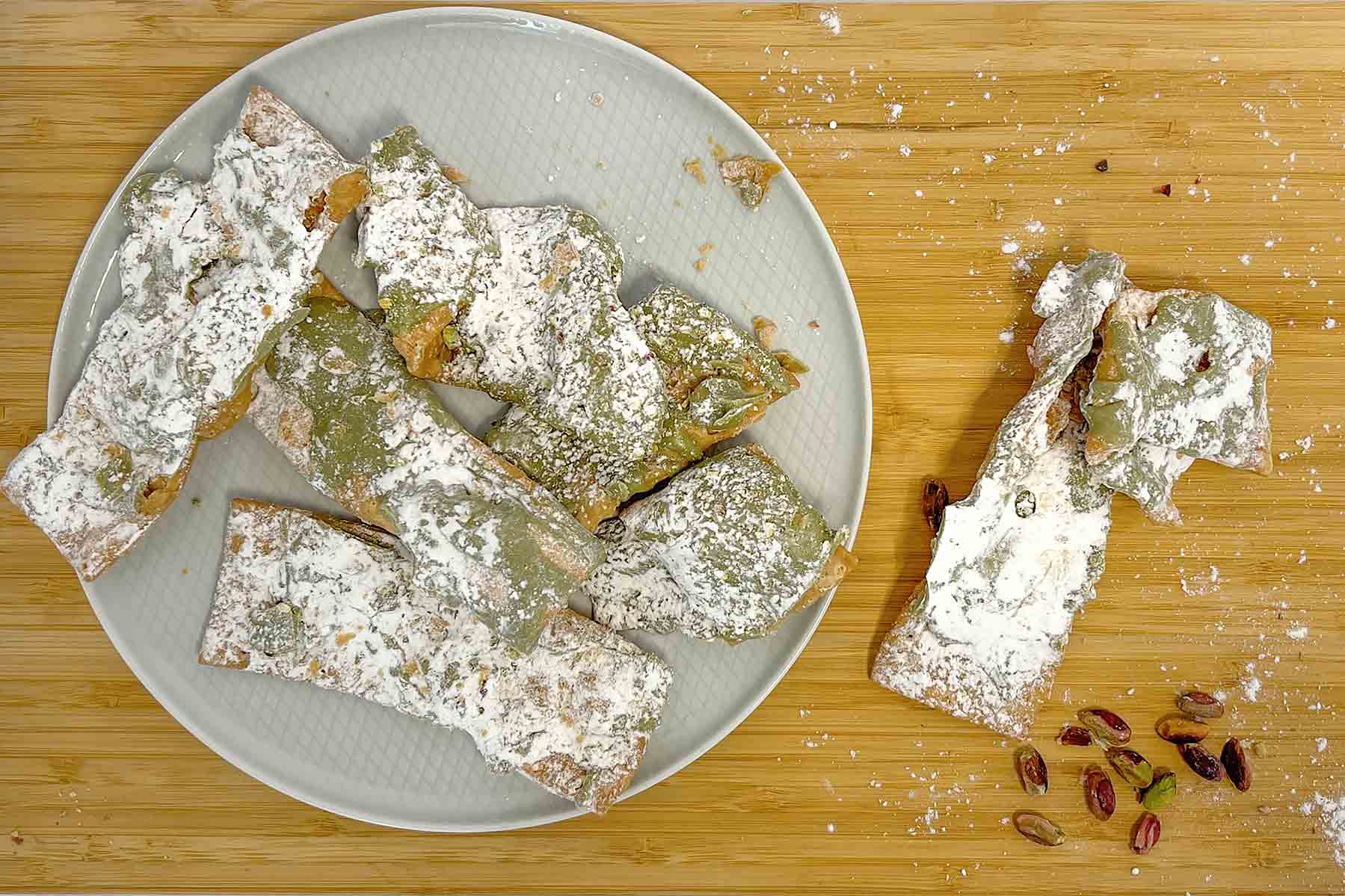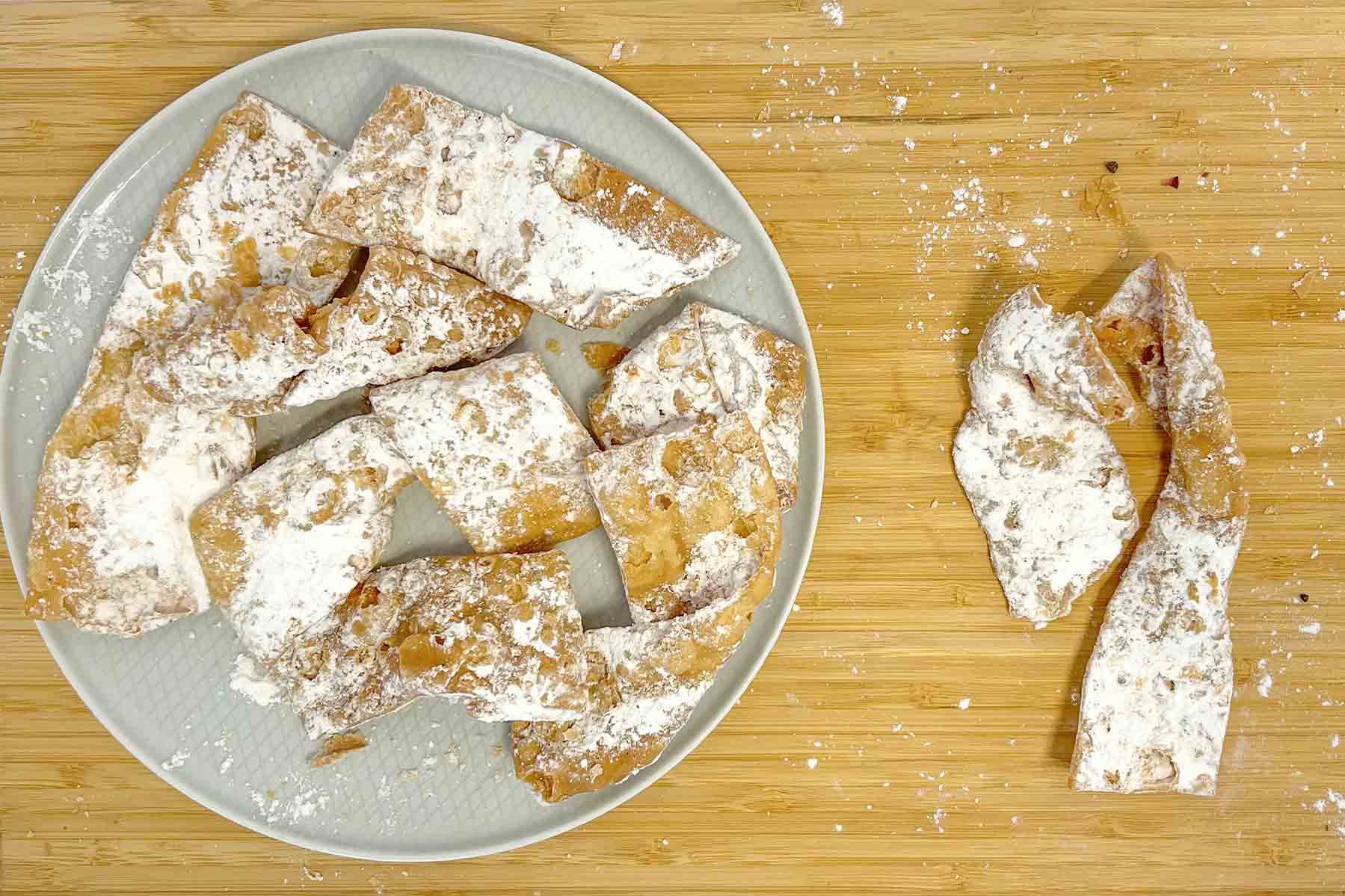



Chatter
🎭𝐂𝐡𝐢𝐚𝐜𝐜𝐡𝐢𝐞𝐫𝐞 𝐬𝐢𝐜𝐢𝐥𝐢𝐚𝐧𝐞 The typical carnival dessert
𝐒𝐞𝐜𝐨𝐧𝐝𝐨 𝐠𝐥𝐢 𝐬𝐭𝐨𝐫𝐢𝐜𝐢, even this sweet dates back to the ancient Roman times, and were called "frictilia", they were used to celebrate the "Saturns" (festivities that corresponds to our carnival).
📖The women of the 𝐚𝐧𝐭𝐢𝐜𝐡𝐢 𝐫𝐨𝐦𝐚𝐧𝐢 prepared it in large quantities, had to last up to Lent.
The custom was to offer it to the crowd on the street while celebrated.
𝐋𝐚 𝐭𝐫𝐚𝐝𝐢𝐳𝐢𝐨𝐧𝐞 𝐝𝐞𝐢 𝐟𝐫𝐢𝐜𝐭𝐢𝐥𝐢𝐚 arrived up to the days of today with obviously variations, due to the time and the region where they are prepared.
👑There is another legend for the name of this cake, this of 𝐭𝐫𝐚𝐝𝐢𝐳𝐢𝐨𝐧𝐞 𝐧𝐚𝐩𝐨𝐥𝐞𝐭𝐚𝐧𝐚.
𝐋𝐚 𝐫𝐞𝐠𝐢𝐧𝐚 𝐒𝐚𝐯𝐨𝐢𝐚 was chatting with a group of people, at some point he was hungry and called the court cook, Raffaele Esposito, who prepared this sweet and in honor of that moment called him "chat",
😍𝐏𝐮𝐨𝐢 𝐭𝐫𝐨𝐯𝐚𝐫𝐞 𝐂𝐡𝐢𝐚𝐜𝐜𝐡𝐢𝐞𝐫𝐞 𝐬𝐢𝐜𝐢𝐥𝐢𝐚𝐧𝐞 𝐚𝐥 𝐂𝐢𝐨𝐜𝐜𝐨𝐥𝐚𝐭𝐨, 𝐚𝐥 𝐏𝐢𝐬𝐭𝐚𝐜𝐜𝐡𝐢𝐨 𝐬𝐢𝐜𝐢𝐥𝐢𝐚𝐧𝐨, 𝐂𝐥𝐚𝐬𝐬𝐢𝐜𝐡𝐞 𝐞 𝐚𝐥 𝐂𝐢𝐨𝐜𝐜𝐨𝐥𝐚𝐭𝐨 𝐛𝐢𝐚𝐧𝐜𝐨
🚚 La spedizione è gratuita?
La spedizione in Italia è gratuita per ordini superiori a 49,90€, altrimenti ha un costo di 5,90€.
La spedizione all’estero viene calcolata durante il processo di check-out, il quale costo varia in base al paese di destinazione, al peso e all’ingombro dei prodotti.
📦 Quando riceverò il mio ordine? Posso seguire il mio pacco?
Riceverai il tuo ordine entro 2-4 giorni lavorativi dopo la partenza del pacco. Le spedizioni vengono effettuate dal lunedì al venerdì.
Una volta evaso l'ordine, riceverai una mail contenente il codice tracking del nostro corriere Bartolini. Il codice tracking si attiverà 12 ore dopo la partenza del pacco.
💳 Come posso pagare?
Accettiamo i seguenti metodi di pagamento:
- Carta di credito/debito o carta prepagata di qualsiasi circuito
- Metodi di pagamento elettronici (apple pay, amazon pay, google pay, etc…)
- Bonifico bancario
- Contanti alla consegna (il contrassegno ha un costo di +3,90€).
👩🏼💻 Assistenza Clienti
Per qualsiasi dubbio, domanda o curiosità dovessi avere riguardo ai nostri prodotti o a come acquistare su Frank Bar, il nostro team è sempre a tua disposizione.
Puoi contattarci in qualsiasi momento dalle 9:00 alle 20:00 tramite
WhatsApp: Chatta con noi
Telefono: +39 3404623861
Email: info@frankbar.it
Choose options




Ogni morso racconta una storia di Sicilia.👩🍳
Dolci artigianali preparati con passione 😋

